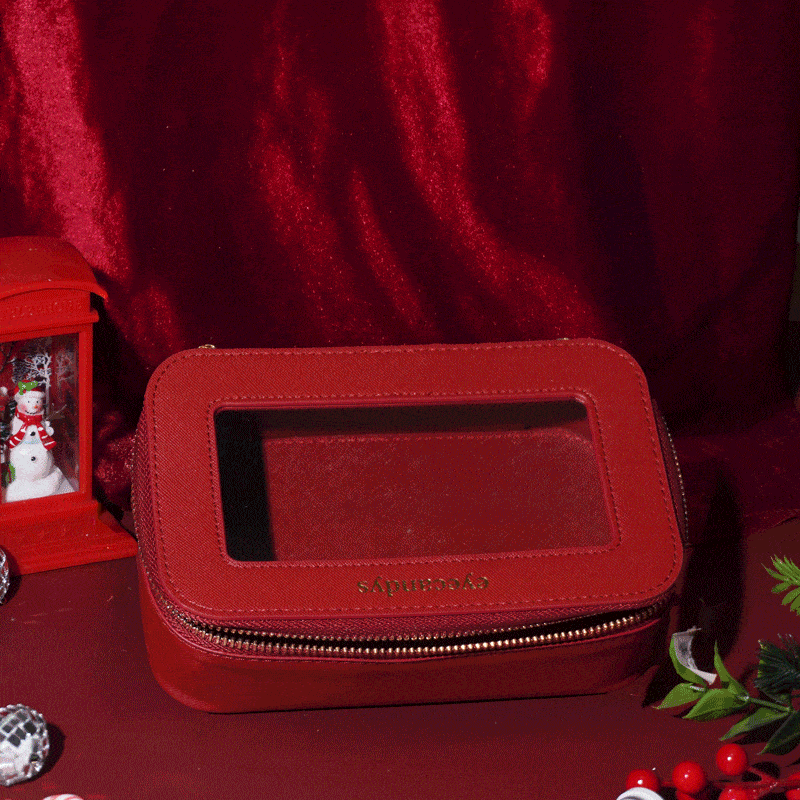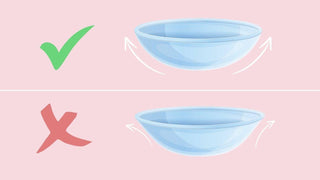Have you ever put in your contact lens only to realize it's inside out? It can be frustrating and uncomfortable. But don't worry, you're not alone. In this blog post, we'll show you how to check if your contact lens is inside out, what causes it to happen, and how to flip it right-side out. We'll also provide some tips for avoiding flipped contact lenses in the future. So, whether you're a seasoned contact lens wearer or just starting out, read on for all the information you need to keep your lenses in place and your eyes comfortable.
How to check if your contact lens is inside out
Have you ever reached for your contact lens case, carefully placed the lens on your finger, and then gently inserted it into your eye, only to experience a strange, gritty feeling and realize that your contact lens is inside out? Believe me, you're not alone! Flipped contact lenses are a common annoyance that can cause discomfort and blurry vision. But don't worry, with a little bit of know-how, you can easily identify and fix this issue.
So, how do you know if your contact lens is inside out? There are generally three ways to tell if your colored contacts are inside out. First, you could place the lens on the tip of one finger such that it resembles a bowl. Check if the edges are smooth or if they flare outwards. If the edges of the contact lens are curling inward, like a tiny bowl, then it's inside out. On the other hand, if the edges are curling outward, like a little plate, then it's right-side out. It's as simple as that!
Second, you could place saline solution into the “bowl” of your lens drop by drop. If the edges start to curl inward, then the lens is in the right position. Otherwise, you’ve got it inside out. Third, you could place the lens on the crease of your palm just below your pinkie finger. Slowly, curl your fingers inward. If the edges of the lens also roll inwards, then it’s in the right position. Otherwise, it is inside out.
Remember, an inside-out contact lens can cause irritation and discomfort, so it's important to check before inserting it into your eye. By following this simple tip, you can ensure that your contact lenses are always properly positioned and providing you with clear and comfortable vision.
Reasons why your contact lens may be inside out
There are several reasons why your contact lens may be inside out. Some of the most common causes include:
-
Improper cleaning: If you do not clean your contact lenses properly, they can become coated in a layer of dirt and debris. This can make it difficult to put them in correctly and can also cause them to flip inside out.
-
Improper handling: If you handle your contact lenses carelessly, you can damage them or cause them to flip inside out. For example, if you drop your contact lenses or if you rub them too hard, you can damage them and make them more likely to flip inside out.
-
Old and warped contact lenses: Contact lenses that are old or warped can be more likely to flip inside out. This is because old contact lenses may become brittle and warped, which can make them difficult to put in correctly. Make sure to not wear lenses beyond the indicated usage period. For example, monthly lenses need to be discarded 1 month after you open their package. Daily lenses are one-time use only and should never be re-worn.
-
Damaged contact lenses: Damaged contact lenses can also be more likely to flip inside out. This is because damaged contact lenses may have sharp edges or tears, which can make them difficult to put in correctly and can also cause them to flip inside out.
-
Contact lenses that are not the right size for your eye: Contact lenses that are not the right size for your eye can also be more likely to flip inside out. This is because contact lenses that are too big or too small for your eye can move around too much and can also be more likely to flip inside out.
What to do if you can't flip your contact lens
If you find that you are unable to flip your contact lens right-side out, it is important to seek assistance from an eye care professional. They will be able to safely remove the contact lens and ensure that it is properly positioned. Here are some additional tips to keep in mind if you are unable to flip your contact lens:
- Do not rub your eye or attempt to force the contact lens into place, as this could cause further damage to your eye.
- Rinse the contact lens thoroughly with contact lens solution to remove any debris or dirt that may be preventing it from flipping correctly.
- Try to flip the contact lens again using a clean finger and following the steps outlined above.
- If you are still unable to flip the contact lens, place it in a clean contact lens case filled with contact lens solution and seek professional help as soon as possible.
It is important to take proper care of your contact lenses to avoid this issue from occurring in the future. This includes cleaning and storing your contact lenses according to the instructions provided by your eye care professional, replacing your contact lenses as recommended, and avoiding wearing them for longer than the prescribed period.
Tips for avoiding flipped contact lenses in the future
Flipped contact lenses can be a real pain, but there are several ways to prevent them from becoming a recurring issue. Firstly, it's crucial to maintain impeccable hand hygiene before handling your contact lenses. Dirt, oil, and other contaminants on your hands can easily transfer to your lenses, increasing the chances of them flipping inside out. So, make sure to wash your hands thoroughly with soap and water and dry them with a lint-free towel before touching your lenses.
Next, pay close attention to the contact lens solution you're using. Not all solutions are created equal, and using the wrong one can compromise the integrity of your lenses, making them more susceptible to flipping. Always adhere to the recommendations provided by your eye care professional regarding the type of solution to use and follow the prescribed cleaning and storage instructions diligently.
Proper insertion technique plays a pivotal role in preventing flipped contact lenses. Before inserting your lenses, carefully inspect them to ensure they're facing the correct way. If a lens is inside out, it won't fit snugly and is more likely to flip. If you're struggling with insertion, consider investing in a contact lens inserter. This handy tool can significantly reduce the chances of flipping and make the process more effortless.
If, despite your best efforts, you find yourself frequently battling flipped contact lenses, it's essential to consult your eye doctor. There might be an underlying issue at play, such as an incorrect prescription or an undiagnosed eye condition. Your eye doctor can conduct a thorough assessment and provide appropriate solutions to address the problem.
By following these preventive measures and seeking professional guidance when necessary, you can significantly reduce the occurrence of flipped contact lenses, ensuring a more comfortable and enjoyable contact lens-wearing experience.







